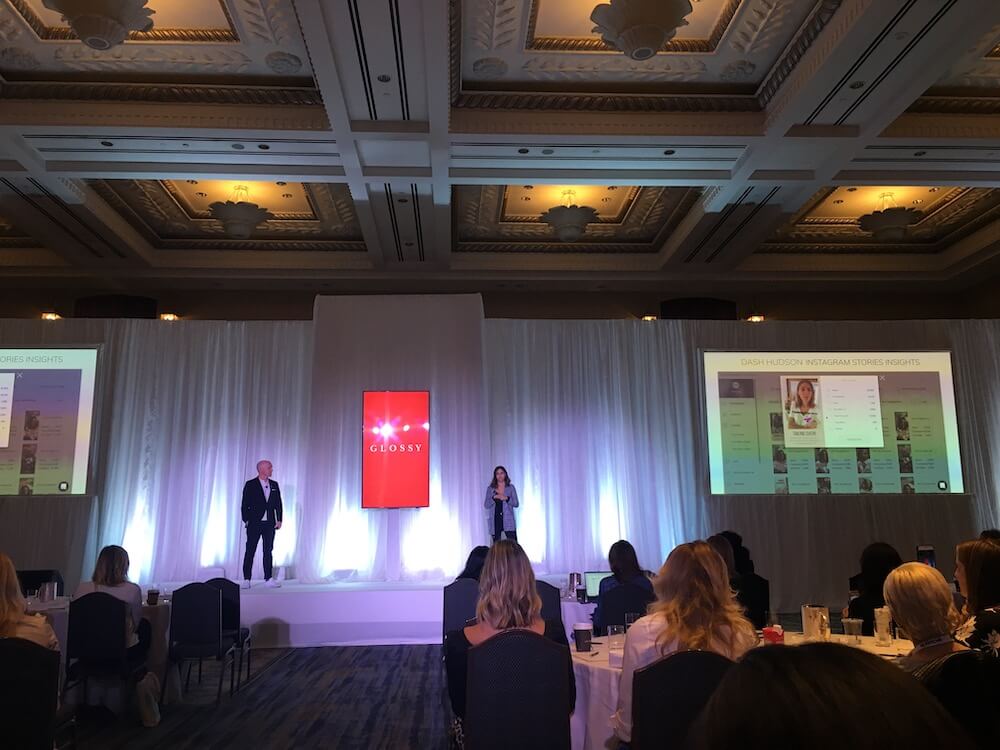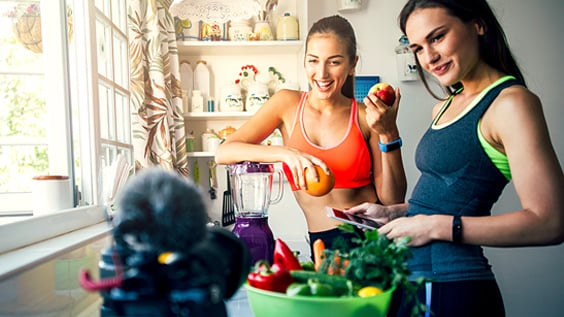As Director of Business Development for the Julius influencer marketing solution, I recently had the pleasure of attending Glossy’s inaugural Beauty x Wellness Summit in Santa Barbara, California.
For three days, marketers and brands joined together to hear insights from speakers such as NARS Cosmetics, Winky Lux, Ipsy, and more, as they discussed K-beauty trends, premium haircare needs, video marketing platforms, and organic cosmetics startups.
Content generally leaned towards the beauty space, with most panelists agreeing that the wellness movement isn’t a “trend,” as they eluded (sometimes vaguely) to their own brand’s specific steps for transitioning into the wellness space.
Aside from the unbeatable backdrop of serene palm trees and a Pacific Ocean breeze at the coastal Ritz Carlton, the conference stood out in its ability to prompt frank discussion across legacy brands, including L’Oreal and Estée Lauder, and beauty newcomers.
Below are some insights I gained from the summit, with a specific focus on our own industry here at Julius – the world of influencer marketing.
The Era of “Personalization”
If working in the influencer marketing industry for the past four years has taught me anything, it’s that the goal of finding “authentic” influencer partnerships is omnipresent.
While I recognize that authenticity is the cornerstone of successful influencer campaigns, it’s hard to love the term as marketers rely on it as default verbiage in almost every influencer-focused panel. Refreshingly, at Glossy’s inaugural Beauty x Wellness Summit in Santa Barbara, the term of the day was “personalization.”
Several brands – Peach & Lily, Ipsy, OUAI Haircare, to name a few – outlined their process of seeking out influencers that help them engage with consumers on a personal level.

Surprise! Everyone’s Still Struggling With Attribution
If we could solve this one, we’d all be billionaires, right? Issues with scalability were discussed, as several brands mentioned relying on data from cumbersome consumer surveys to gain insights into recent campaign successes – and failures.
Diversity, whomp whomp
After the first two days of sessions at the summit, I was surprised that the diversity of the beauty world was barely touched on. True, brands like OUAI Haircare discussed employing a diverse array of influencers to successfully showcase the variability of their curly hair products, for instance, and others added that “diversity is a must” when both marketing and launching their products.
However, the general consensus felt a bit non-committal – brands know and recognize the rising importance of diversity in the beauty space, but as one speaker put it (without naming any names), it seems like many marketers are leveraging diversity as a commercial opportunity, and not a genuine practice of inclusion.
Testing of Non-Digital Marketing Formats Are on the Rise
From IRL experiences to podcast marketing, product review channels, and an elevated importance on strategic B2B partnerships, new platform marketing formats were discussed at length during the conference.
Two common themes emerged from both panels and workshop discussions:
- Vertical integration: Layering marketing approaches for a more vertically integrated experience – such as promoting an event via both a partner podcast and brand-aligned influencer content – has proven most successful when taking on the risk of testing the waters with a new marketing strategy.
- The popularity of pop-ups: B2B partnerships are the key to running a successful pop-up or event space takeover – but don’t expect a high ROI. Customer acquisition is important, but retention remains the challenge as pop-ups become more and more popular in the beauty and wellness space (and in general – with Facebook even getting in the mix).
All-in-all, the most impactful takeaway I had from Glossy’s Beauty x Wellness Summit was that storytelling and category education remain paramount initiatives for both fledgling and prestige brands – with influencer partnerships serving as a natural and powerful platform for bridging the gap between brand and consumer.
-1.png?width=239&name=Julius%20By%20Triller%20-%20Wordmark%20-%20Purple%20(1)-1.png)







